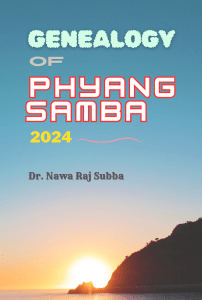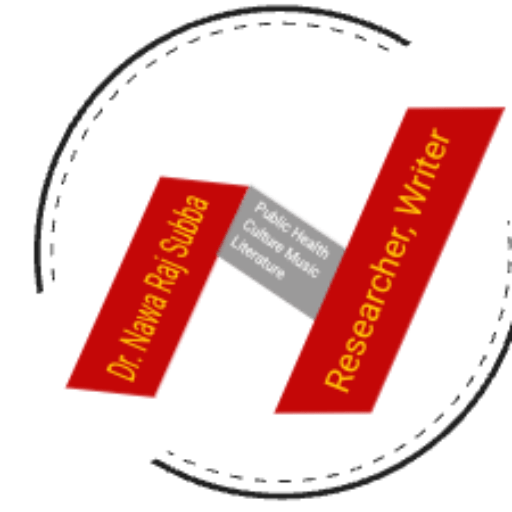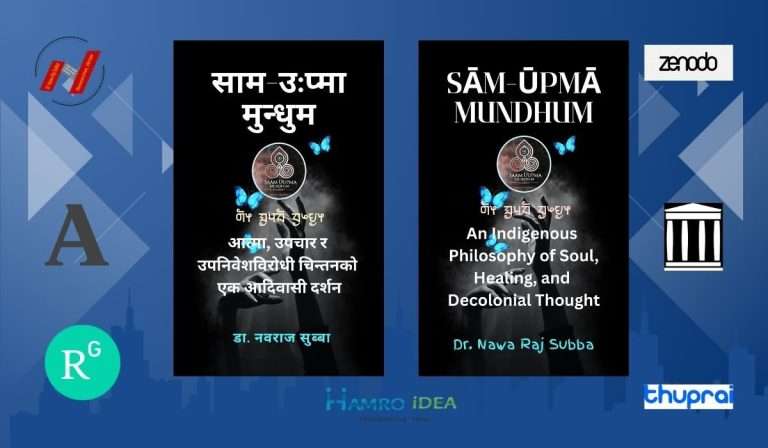Genealogy-2024
The Genealogy of Phyang Samba 2024

What’s in a Genealogy? A Deep Dive into the Ancestry of the Phyang Samba Clan
Genealogy is much more than a family record—it’s a bridge connecting the past, present, and future. In Kirat Rai and Limbu communities, significant life events such as birth, marriage, and death are marked with cultural rituals that establish identity. The Limbu word “naam” mirrors the Nepali term “gham” (sun), representing a universal essence. With the sun as a divine witness, these rituals honor ancestors while passing vital family knowledge across generations.
In Kirat culture, genealogy is not just about lineage; it’s about preserving ancestral heritage through practices rooted in Mundhum, the ancient oral scripture of the Kirat people. It links individual identities to a broader sense of ancestral pride and belonging.
The Evolution of Genealogy
Historically, genealogies served cultural purposes, ensuring ancestral ties remained strong. Over time, they have evolved to become essential tools for anthropology and history. A genealogy must now go beyond listing ancestors—it should answer the why, when, and how of lineage with factual evidence and analytical insights.
The genealogy of the Phyang Samba clan is an endeavor to achieve precisely this. It not only catalogues ancestral names but also sheds light on the philosophical, epistemological, and cultural elements of the past. It bridges gaps in understanding by reinterpreting historical contexts.
Connecting Past and Present
Without understanding the past, one cannot fully grasp the present, let alone envision the future. As the Mundhum unfolds, it reveals the origin of clans, the foundational histories of surnames, and the geographic migrations of the Kirat people. Oral traditions and genealogical studies have preserved this knowledge, creating a rich foundation for further exploration.
The Phyang Samba genealogy traces its roots back to historical migrations. Around 1388 CE, members of the Kirat Sen dynasty crossed Saguri hills from Chaudandi and Chatara in the Koshi Barah region to enter Limbuwan. Some settled in Poklaband, Tehrathum, while others established dominion in Yangrup, Panchthar. Among them, two brothers migrated to the Mewa and Tamor river basins, adapting to the socio-political and cultural environment. Over time, they adopted the surnames “Samba” and “Phyang Samba,” becoming integral parts of the Limbu community.
A branch of the Phyang Samba clan later merged into the Rai community in Sankhuwasabha (Khambuwan). Today, members of this lineage are spread across Nepal, India, Bhutan, and even the United Kingdom, showcasing a geographic and cultural diversity rooted in shared heritage.
A Rich Resource for Researchers
The genealogy of the Phyang Samba family offers an in-depth look into their history, culture, and geography. It outlines the familial connections, traces bloodlines, and reinterprets complex sociocultural questions. This makes it a valuable resource for readers and researchers interested in Kirat Mundhum, history, and traditions.
Author’s Brief Biography
Name: Dr. Nawa Raj Subba
Full Name: Fyang Samba Limbu
Parents: Naramaya Fyang (Mudenchhang) and Aitaraj Fyang Samba
Birth: October 1961 (B.S. 2018), Hangpang, Triveni Rural Municipality, Taplejung
Education: Ph.D., MPH, M.A.
Experience: Over 35 years in public health services, currently retired and actively engaged in research and writing.
Dr. Subba’s work is a testament to his dedication to preserving and interpreting the heritage of his community. His meticulous documentation provides not just a record but also a reflection of the socio-cultural and historical depth of the Fyang Samba lineage.
Explore the roots, understand the branches, and celebrate the tree of ancestry.



